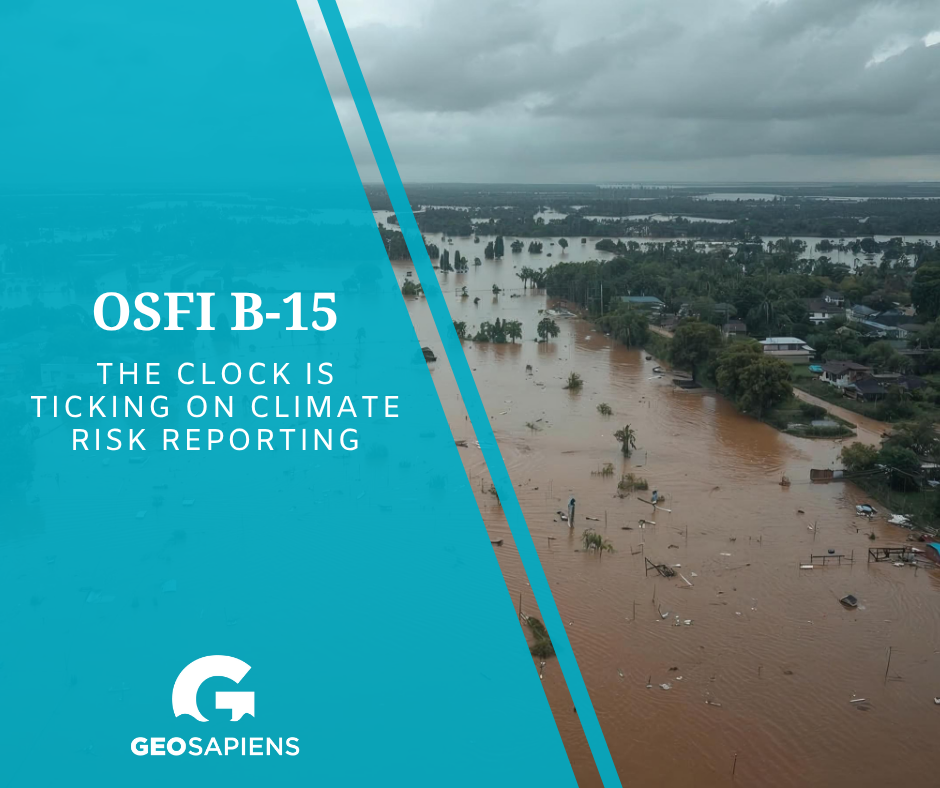Why the insurance industry is still unable to offer an accessible flood insurance product?
- Geosapiens

- Nov 23, 2022
- 3 min read
Updated: Nov 30, 2022

Floods are the costliest natural disaster for the Canadian insurance industry. According to a recent study by Public Safety Canada, flood damage is estimated to total $1.5 billion annually. This amount reflects the urgent need to make flood insurance products more accessible to better protect the population at risk. However, the insurance industry does not yet appear to be fully prepared to offer affordable flood insurance coverage that is accessible to all Canadians.
While some insurers cover water damages, coverage for lake and river flooding damages remains relatively unavailable and/or expensive. In some cases, flood insurance premiums can reach $10,000 to $15,000 or more for flood endorsements only, without considering other home insurance costs.
This article aims to highlight the insurance industry challenges in terms of flood risk management and assessment that limits their capacity to offer an available and accessible flood insurance product.
What are the challenges the insurance industry is facing to offer a more accessible flood insurance product?
Canadian insurance companies face several challenges in creating a viable and accessible flood insurance product. These challenges can be summarized as follows:
1- The low accuracy of existing flood maps:
High spatial resolution flood maps are incomplete and not widely available in Canada. Existing data has generally low spatial resolution (30 to 90 m) or are outdated and with a limited geographic coverage. High spatial resolution flood zone maps are generally produced by municipalities and governments for regulatory purposes in land-use planning and are not adapted for insurers actuarial needs. Moreover, these flood zone maps use different return periods depending on the province, which is a major challenge in terms of data homogeneity. Finally, one of the biggest issues for insurers in terms of flood zone mapping is data quality, which is currently very variable in terms of accuracy and production date.

A comparison between high and low spatial resolution flood maps
All these gaps represent significant challenges for insurers to accurately assess flood risk at the property level and evaluate flood associated losses. These limitations represent a real challenge for the Canadian insurance industry to understand this risk and therefore, be able to price it properly.
2- Adverse selection: a major challenge for flood insurance?
Adverse selection is an imbalance in risk selection caused by the fact that high-risk clients attempt to obtain insurance more often than moderate or low-risk clients. Adverse selection is a major challenge for insurance companies because the flood risk does not lend itself to the economic parameters of insurance. This risk inherently leads to adverse selection, which in turn hinders the basic principle of insurance, namely diversification through risk pooling. As a result, flood insurances exist on the market but are hard to offer since these products are expensive and therefore inaccessible for most of the Canadian population.
3- Risks related to the unpredictability of climate change
The impact of climate change is an important variable that is not generally considered in the existing risk models used by the insurance industry. As a matter of fact, floods will be more frequent and more damaging in the coming years because of climate change. The Insurance Bureau of Canada (IBC) has estimated that between 1983 and 2008, a large portion of the annual claims paid for climate change and natural disaster events were due to flooding. These claims averaged between $250 and $450 million per year. Since 2009, the average financial loss from flooding has reached $1.8 billion. Today, these financial losses, which are continuously increasing, demonstrate the major impacts of climate change on this industry.
The insurance industry plays an important role in sharing flood risk with the various stakeholders, notably governments and citizens. Concerted actions between these key stakeholders are needed to increase the preparedness and resilience of our society in the face of floods, particularly in the context of climate change. Important work remains to be done by insurance companies to increase their capacity to understand this risk and thus better protect their clients and contribute to the awareness and recovery efforts of individuals and communities.
Geosapiens' mission is to be part of the solution to this natural hazard by offering the most accurate modeling data on the market. Our goal is to help insurance companies and all stakeholders have the information they need to understand, prevent, and manage this risk. Talk to us about your flooding challenges and we will be happy to provide you with the solution that best suits your needs.
Contact: info@geosapiens.ca







Comments